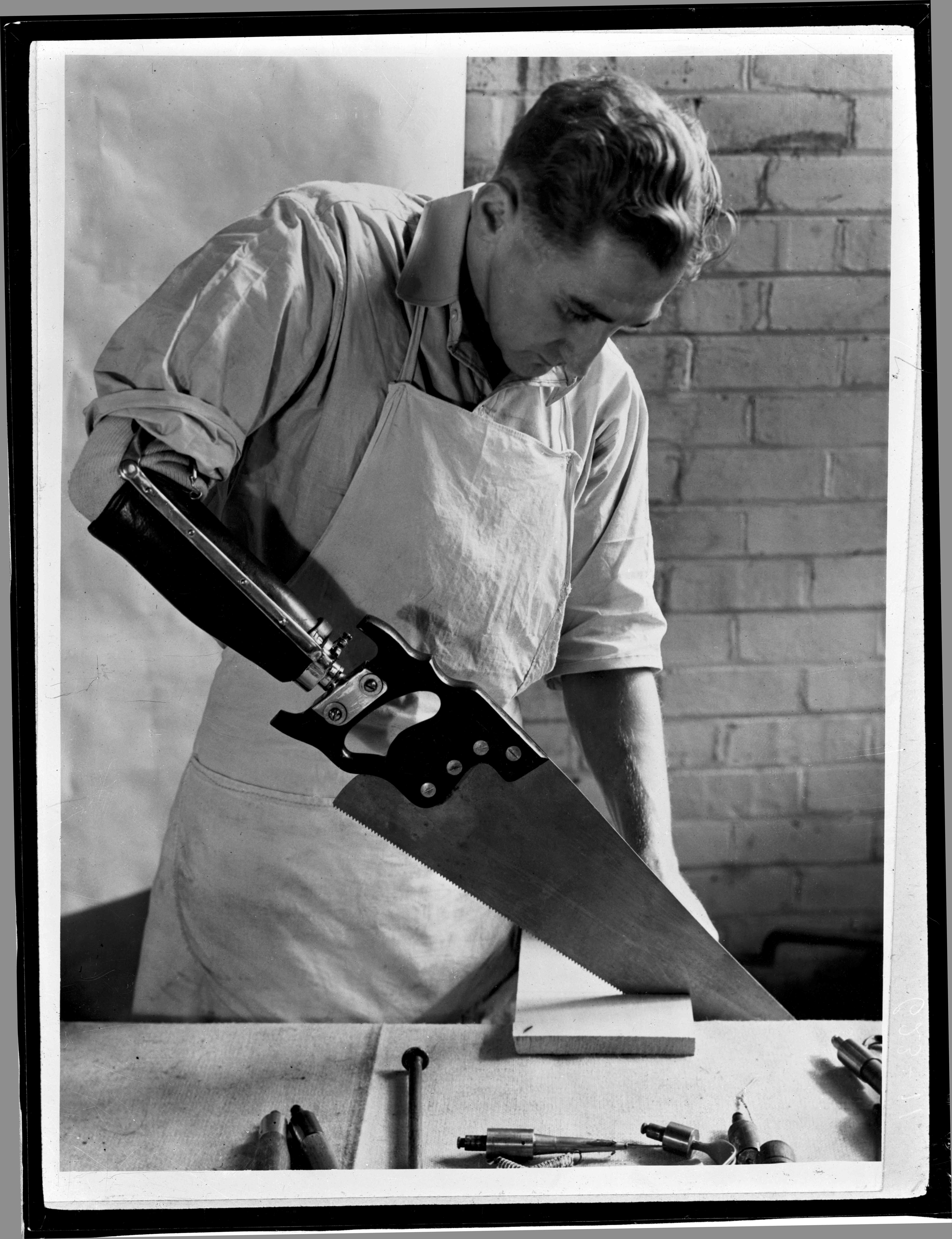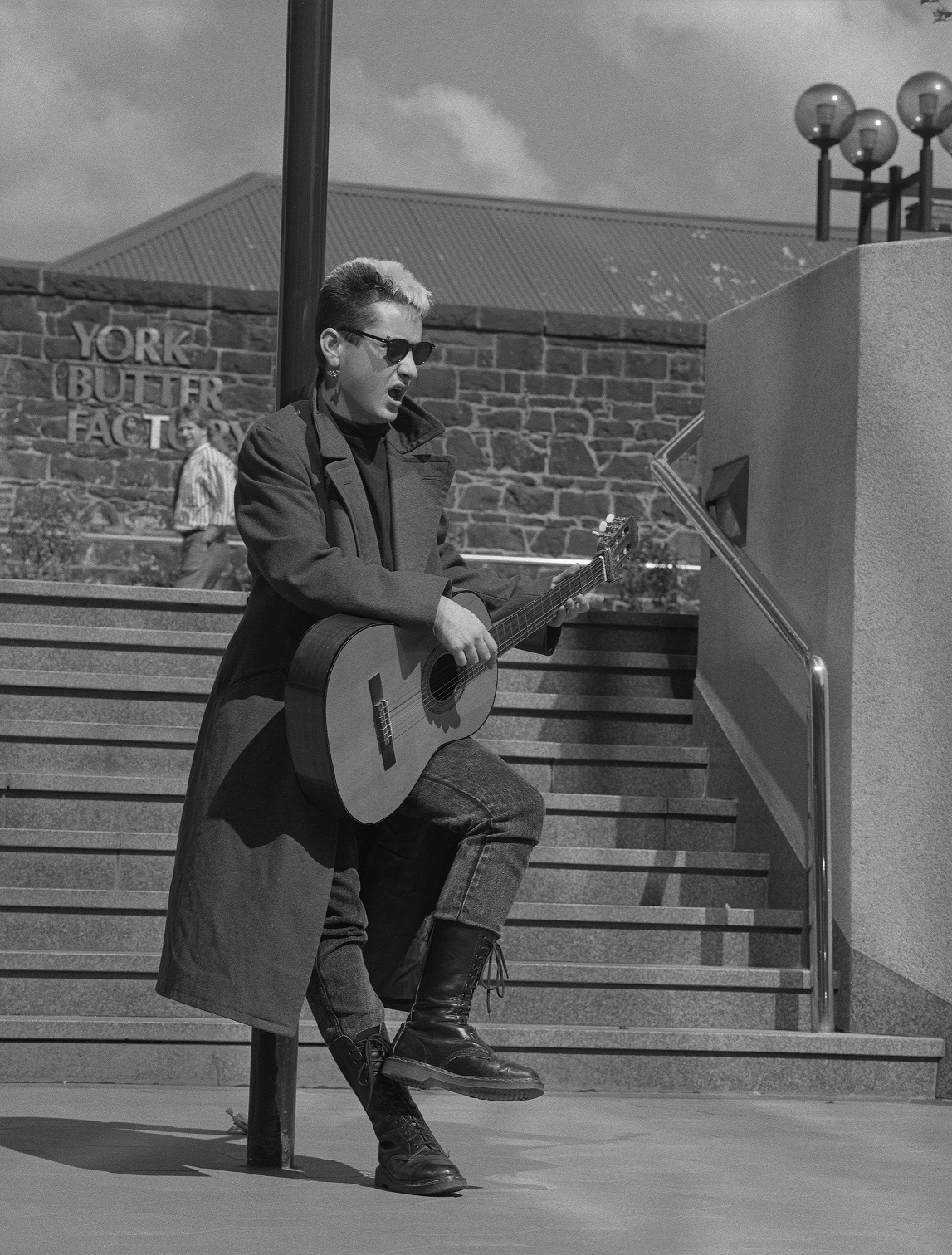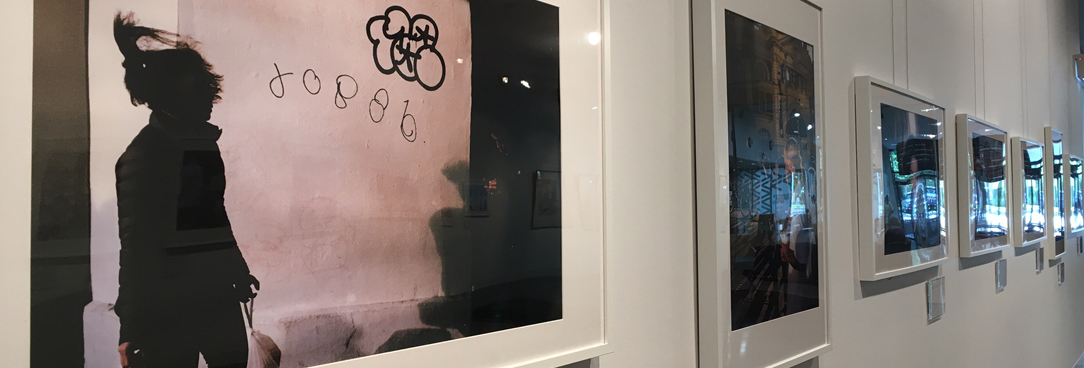
Author: Kate Follington
This is the final month of the Victorian Archive Centre’s first collaborative photographic exhibition at their new VAC Gallery, a space dedicated to exhibiting the state government’s archived photographic collections, alongside contemporary street photography.
The free exhibition Hair: from Mos to Mullets, charts the evolution of hairstyles from the dashing bearded men of 1880 to the freedom singing hippies a century later. The theme was aptly chosen for the important role it plays in archival research. For archivists, hairstyles are a helpful indicator of a photo’s time period, particularly given most government photographs arrive with little information on when the photo was taken, and of whom. Often the subtle changes in a hairstyle will help pin point a date period to within a few years.
The exhibition also places the photographs within their social context, hair being a symbolic marker of social change underway within society. The modern Mohawk, for example, is commonly linked with the punk scene and emerged during the mid-1970s, part of a broader movement against the political conservative establishment of the time, while a Short-Back-And-Sides cut with a clean shaven face became common during the First World War. Cropped military hairstyles reduced the spread of lice, maintained uniformity and gave soldiers a semblance of cleanliness.
The VAC Gallery, produced by a team of PROV staff members, also contrasts Melbourne history with the landscapes and people of contemporary Melbourne. Following an invitation to urban street photographic networks to submit photographs on the theme of 'hair' , visitors also enjoy a wall of stunning street photographic prints from members of the public interpreting hair from across the City. The photographic exhibition Hair: from Mos to Mullets will close in March.

Victorian Railways Commission 1883-1973, Public Transport Corporation Photographic Collection, Man With Artificial Arm With Saw Attached Cutting Wood, c1920. VPRS 12903 P1/Box 623-11

What is the history of government photography in Victoria?
In the late 1830s as Melbourne plotted its transformation from a simple farming settlement into a well designed city, an extraordinary technological feat was capturing the world’s attention: the science of photography.
At this parallel point in history Louis Daguerre was capturing the first photographic image, in 1839, a Parisian street scene so clear one could see a man polishing shoes. Over the following forty years advancements in photographic technology moved from lengthy exposure times with glass plate negatives, to the beginning of celluloid film; our ability to replicate the real world, exactly as we saw it, became possible.
By the 1860s Governments began to include photographers within their teams, and the timing for Melbourne couldn’t have been better. Unlike Sydney, Melbourne’s early development was captured in photographs. Much of these preserved at the Victorian Archives Centre, by Public Record Office Victoria.
Although family portrait photography was popular with the middle class, government photographers were tasked with recording major developments like railroads, ports, and new schools. The consequence of these early street landscapes is the inclusion of the average person: the newspaper seller, women rushing to work, or men on the docks. Usually nameless, government photographers were focussed on the task of capturing public projects rather than individuals.
The camera also served a practical purpose for police departments in the late 1800s, with the emergence of forensic photography and mug shot (rogue) galleries. Today, these police photographs are significant as a time machine into the under class of early Melbourne, or in the case of Ned Kelly the plight of the Irish poor, or even early Chinese immigration.
By the 20th Century the power of photos to influence behaviour began to creep into government collections. Although government photographers continued to document public works, agencies were also commissioned to shoot staged models for advertising or social campaigns, promoting anything from milk to train travel.
Today, they’re fashionable. These black and white images of early Melbourne decorate expensive note pads and tote bags. They appeal to our need for connection, bringing us together over a shared love of the place we live and a fascination with its history.
Kate Follington
Material in the Public Record Office Victoria archival collection contains words and descriptions that reflect attitudes and government policies at different times which may be insensitive and upsetting
Aboriginal and Torres Strait Islander Peoples should be aware the collection and website may contain images, voices and names of deceased persons.
PROV provides advice to researchers wishing to access, publish or re-use records about Aboriginal Peoples
